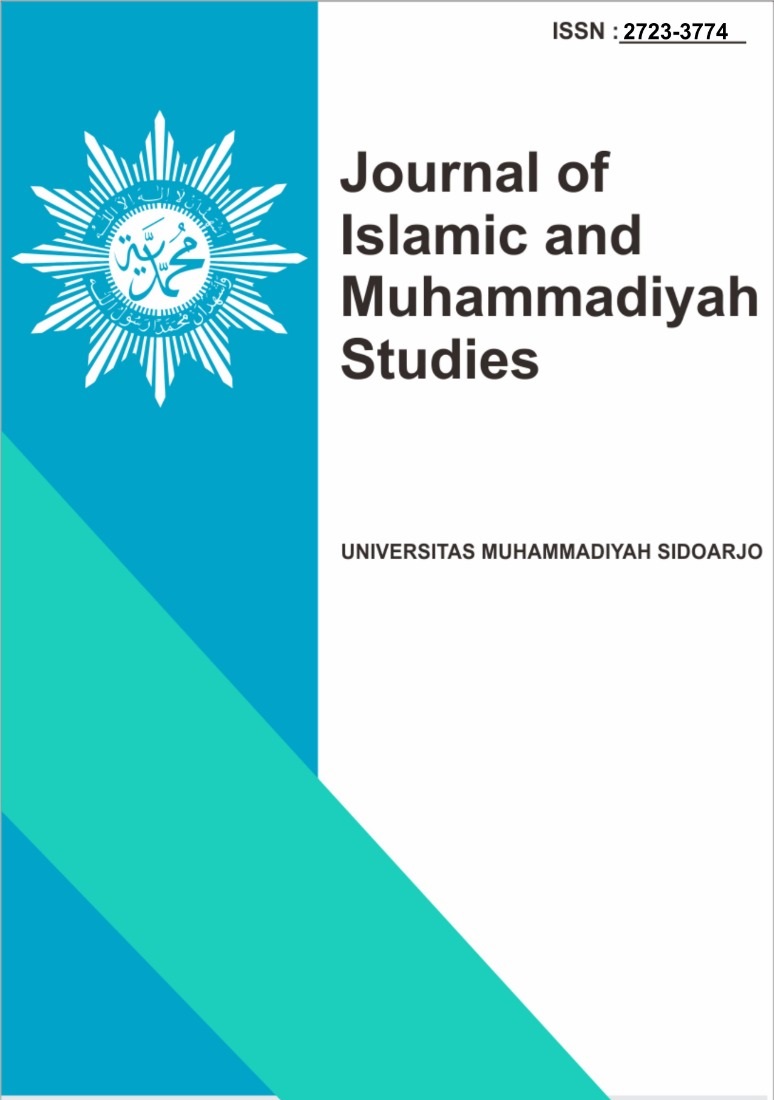MUMTAZ SMART Application for Improving Learning Quality at Muhammadiyah 1 Taman
Aplikasi MUMTAZ SMART untuk Meningkatkan Kualitas Pembelajaran di Muhammadiyah 1 Taman
DOI:
https://doi.org/10.21070/jims.v7i2.1645Keywords:
MUMTAZ SMART, Digital Education, Muhammadiyah School, Learning Quality, Educational InnovationAbstract
General background: The integration of technology in education is essential to achieve high-quality learning and ensure engaging, effective teaching practices. Specific background: Muhammadiyah schools, as part of Islamic-based education, face challenges in sustaining learning quality, particularly after the pandemic period when digital tools were widely adopted. Knowledge gap: While previous studies focused on the temporary role of digital platforms during emergency remote teaching, little is known about the long-term sustainability of MUMTAZ SMART in elementary school contexts. Aims: This study investigates how the MUMTAZ SMART application supports teaching and learning processes at Muhammadiyah 1 Taman Elementary School. Results: Findings reveal that the application strengthens instructional planning, online interaction, digital resource access, and evaluation, although challenges remain in teacher readiness, digital literacy, and infrastructure. Novelty: Unlike earlier research, this study highlights the continuous use of MUMTAZ SMART beyond the pandemic as a structured quality improvement tool. Implications: The results suggest that MUMTAZ SMART can serve as a model for other Muhammadiyah schools to institutionalize digital-based quality learning management.
Highlights:
- Supports sustainable digital learning quality
- Identifies challenges in teacher and infrastructure readiness
- Offers a replicable model for Muhammadiyah schools
Keywords: MUMTAZ SMART, Digital Education, Muhammadiyah School, Learning Quality, Educational Innovation
References
Abarca, R. M. (2021). Efektivitas ICT (Information Communication and Technology) dalam pembelajaran Pendidikan Agama Islam di SMK Terpadu Takwa Belitang Kabupaten Ogan Komering Ulu Timur. Nuevos Sistemas de Comunicación e Información, 2013–2015.
Adiko, H. S. (2019). Penggunaan media pembelajaran berbasis ICT dalam meningkatkan motivasi belajar peserta didik. Akademika: Jurnal Ilmiah Media Publikasi Ilmu Pengetahuan dan Teknologi, 7(2), 67.
Apiyani, A., Supriani, Y., Kuswandi, S., & Arifudin, O. (2022). Implementasi pengembangan keprofesian berkelanjutan (PKB) guru madrasah dalam meningkatkan keprofesian. [Nama jurnal tidak tersedia], 5, 499–504.
Bachtiar, I., & A. N. S. (2008). Ethos: Jurnal Penelitian dan Pengabdian Masyarakat, 1(1), 131–138.
Mulyana, D. (2008). Metodologi penelitian kualitatif. Bandung: PT Remaja Rosdakarya.
Pendidikan, D., & Human, E. R. A. (2023). Mukmin, dkk. Jurnal Pendidikan, 8, 126–137.
Jurnal Prima Edukasi, et al. (2021). Perkenalan di kelas seperti dilansir Kompasiana.com dengan tajuk “Kurikulum sudah 2013, tapi gaya mengajar...”. Jurnal Prima Edukasi, 9(1), 23–31.
Magister Pendidikan Ekonomi, & Universitas Riau. (2011). Pengaruh pemanfaatan TIK berbasis media pembelajaran terhadap motivasi belajar siswa. [Prosiding/jurnal tidak tersedia], 978–979.
Kecamatan, D. I., & Cipari, K. (2019). 7(1), 109–119.
Mega, K. I. (2022). Mempersiapkan pendidikan di era tren digital (Society 5.0). Jurnal BELAINDIKA (Pembelajaran dan Inovasi Pendidikan), 4(3), 114–121.
Mulyono, F. (2013). Sumber daya perusahaan dalam teori resource-based view. Jurnal Administrasi Bisnis, 9(1), 6–7.
Mutu, Manajemen, & Pendidikan Islam. (2014). Jurnal Manajemen Pendidikan dan Keislaman, 159–166.
Mutu, Manajemen, Terhadap Peningkatan, & Kualitas Lembaga. (n.d.). 3(1), 1–24.
Nursamsu, N., & Kusnafizal, T. (2017). Pemanfaatan media pembelajaran ICT sebagai kegiatan pembelajaran siswa di SMP Negeri Aceh Tamiang. Jurnal IPA & Pembelajaran IPA, 1(2), 165–170.
Nururhuda, A. (2018). Evaluasi kurikulum Al Islam Kemuhammadiyahan dan Bahasa Arab berbasis integratif-holistic di SMA Muhammadiyah 1 Muntilan. Tarbiyatuna, 9(2), 134–150.
Romadlon, D. A., Bagus, A., & Kurniawan, H. (2022). Implementasi sistem penjaminan mutu internal di sekolah dasar. Procedia of Social Sciences and Humanities, 3(c), 678–685.
Sartipa, D., & Munisah, E. (2023). Edusaintek: Jurnal Pendidikan, Sains dan Teknologi, 10(3), 988–999.
Hendradi, P., Sanusi, A., & Muchtar, H. S. (2022). Information and communication technology media management in improving the quality of learning in vocational. 1(1), 45–54.
Sudirman, H., & Mansyur, M. (2020). Jurnal Ilmu Pendidikan, 4(2), 318–333.
Sugiyono. (2008). Memahami penelitian kualitatif. Bandung: CV Alfabeta.
Sukatin, et al. (2022). Perkembangan pendidikan di era 5.0. PIJAR: Jurnal Pendidikan dan Pengajaran, 1(1), 78–86.
Supriani, Y., & Arifudin, O. (2022). Kepemimpinan pendidikan di era disrupsi. [Jurnal tidak tersedia], 5, 153–161.
Umar, M., & Ismail, F. (2018). Peningkatan mutu lembaga pendidikan Islam (Tinjauan konsep mutu Edward Deming dan Joseph Juran). Jurnal Ilmiah Iqra’, 11(2).
Downloads
Published
How to Cite
Issue
Section
License
Copyright (c) 2025 Wildan Mucholladun , Eni Fariyatul

This work is licensed under a Creative Commons Attribution 4.0 International License.
Authors retain copyright and grant the journal right of first publication with the work simultaneously licensed under a Creative Commons Attribution 4.0 International License that allows others to share the work with an acknowledgement of the work's authorship and initial publication in this journal.






